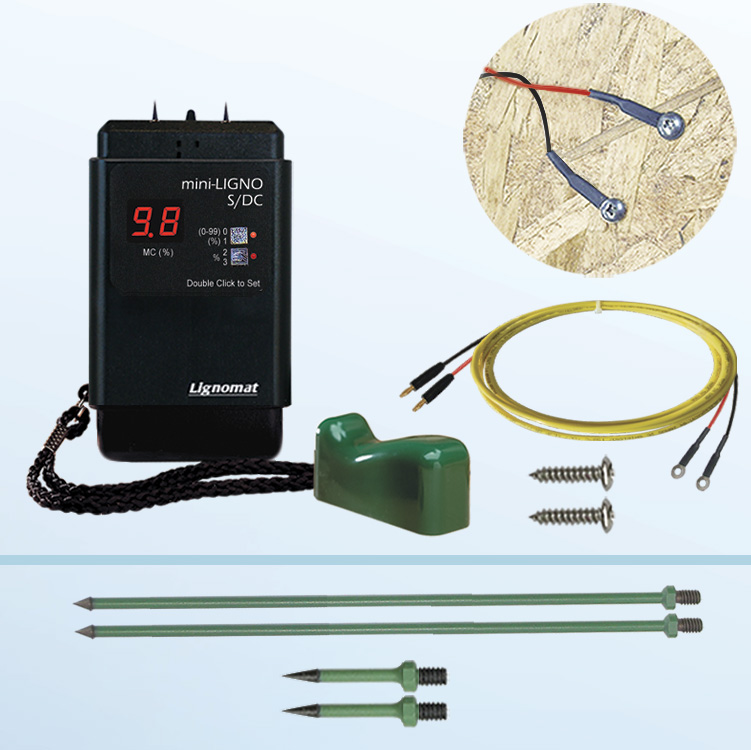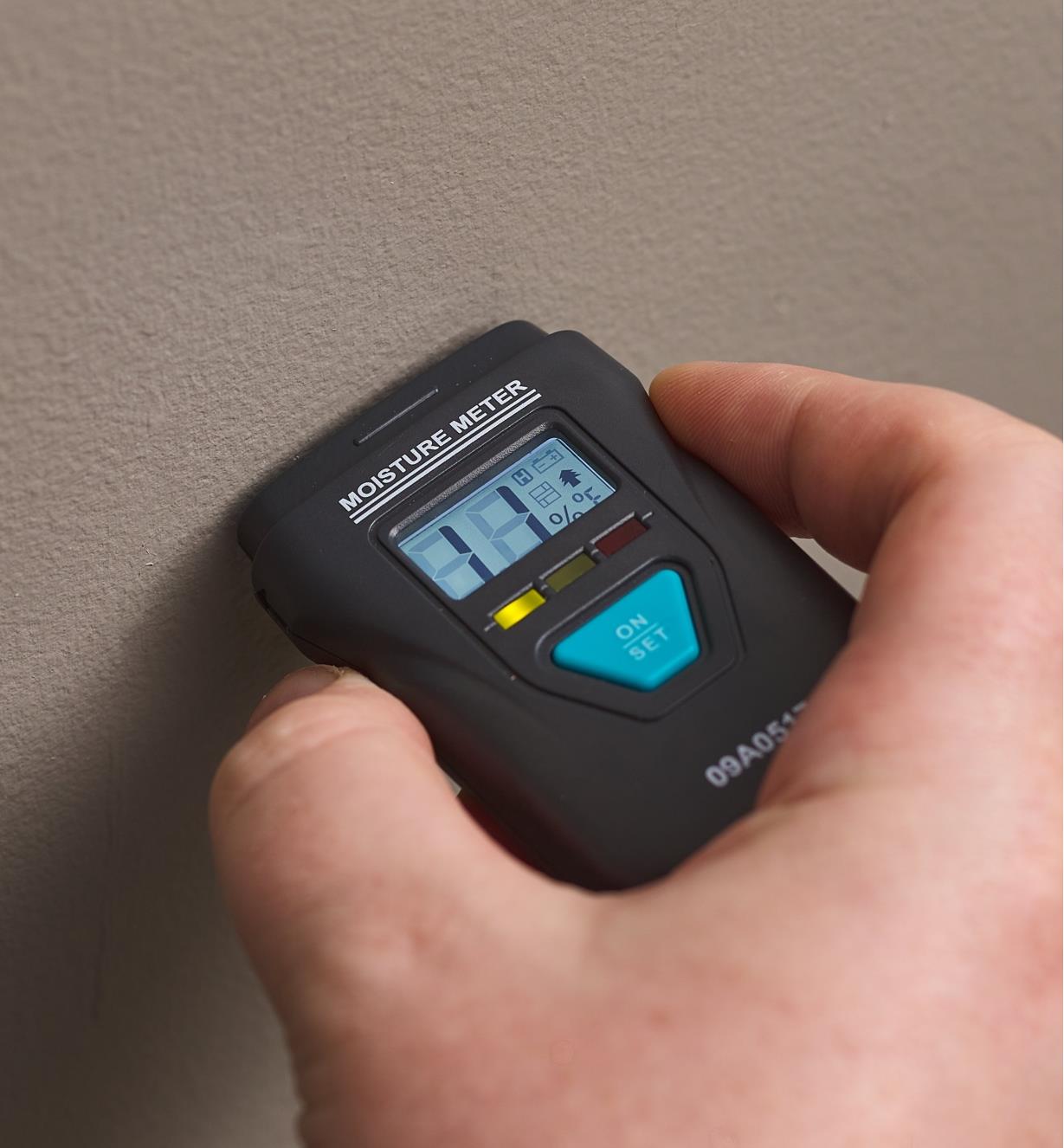Just how to Utilize a Moisture Meter to Find Concealed Water Damage in Your Property
Just how to Utilize a Moisture Meter to Find Concealed Water Damage in Your Property
Blog Article
Understanding the Importance of a Moisture Meter in Preventing Mold and Water Damage in Your Home
In the world of home maintenance, the existence of wetness can often be a silent yet formidable opponent, capable of causing pervasive mold growth and dangerous water damages if left unattended. Recognizing the importance of a dampness meter in this battle is not just an alternative but a tactical necessity.
Relevance of Moisture Detection
Reliable moisture detection approaches are important for safeguarding homes and stopping prospective mold development and water damage. Dampness can leak right into various structure materials, bring about architectural concerns and carcinogen. By making use of a moisture meter, homeowner can proactively recognize areas susceptible to excess wetness, allowing for timely intervention and reduction methods.
Moisture meters provide accurate readings of wetness degrees in different products such as timber, drywall, and concrete. This information helps in pinpointing locations of concern, also in hard-to-reach or surprise areas. Early discovery of moisture accumulation makes it possible for prompt repairs or adjustments to stop further damage.

How Moisture Meters Work
Dampness meters play a pivotal duty in the positive recognition of excess dampness, helping in the avoidance of prospective mold development and water damages by offering exact readings of dampness levels in numerous structure products. These devices function based upon various principles, depending upon their kind. Moisture Meter. Pin-type wetness meters, for example, have two pins that permeate the material to measure the electrical resistance between them. When dampness is present, it enhances the product's conductivity, leading to a lower resistance analysis. Pinless moisture meters, on the various other hand, usage electromagnetic sensing units to check the material without creating damages. These sensing units send out electromagnetic signals that penetrate the material and gauge the dielectric residential or commercial properties, showing wetness content. Some advanced dampness meters pin both combine and pinless modern technologies for detailed wetness detection. Comprehending how moisture meters function is necessary for prompt and exact moisture level assessments, enabling reliable precautionary procedures versus mold and mildew and water damage.
Detecting Early Caution Indications
Upon initial assessment of a building, acknowledging refined signs of excess wetness comes to be vital in the very early detection of prospective mold development and water damages. Some usual very early indication include stuffy odors, water stains on walls or ceilings, peeling off paint or wallpaper, and distorted or stained surface areas. Moldy smells frequently indicate the existence of mold or mold, also if no noticeable signs are web obvious. Water spots can signal leakages or seepage, while peeling off paint or wallpaper might be a result of moisture jeopardizing the bond of these materials to the surface area. Deformed or tarnished surface areas, such as bending floorboards or stained drywall, are clear indications of water damages. Furthermore, an increase in allergy symptoms or breathing problems among passengers may suggest the visibility of mold as a result of excess moisture. By without delay identifying and addressing these very early indication, house owners can reduce the threat of substantial mold and mildew growth and water damage in their residential or commercial properties.
Protecting Against Mold And Mildew Development
Recognizing very early warning indicators of excess dampness within a residential property not just makes it possible for timely detection of possible mold growth and water damages however additionally offers as an aggressive step in stopping the spreading of mold and mildew. To successfully protect against mold and mildew development, it is important to attend to any kind of sources of wetness without delay.
Keeping track of wetness levels in areas prone to moisture, such as cellars and creep rooms, making use of a dampness meter can also aid in very early discovery of raised dampness degrees and prospective mold development - Moisture Meter. By taking aggressive procedures to stop excess wetness and mold and mildew growth, homeowners can protect their property and interior air quality.
Benefits of Routine Tracking
Normal monitoring of dampness levels in a residential or commercial property can play a critical role in preserving a healthy interior atmosphere and avoiding potential mold and water damages. By on a regular basis inspecting moisture levels, house owners can discover any kind more of concerns without delay and take essential actions to stop mold and mildew development and water damage.
Additionally, normal monitoring permits house owners to track patterns and trends in dampness degrees in time. By developing a standard and tracking adjustments, people can determine any kind of locations of concern or possible susceptabilities in the property's structure. This data-driven method makes it possible for targeted treatments and upkeep efforts to resolve underlying concerns prior to they intensify into more significant problems. Inevitably, the consistent monitoring of dampness levels encourages homeowners to secure their residential or commercial property, guard their health and wellness, and preserve the honesty of their interior environment.

Final Thought

By utilizing a dampness meter, residential or commercial property proprietors can proactively identify locations vulnerable to excess wetness, allowing for prompt treatment and mitigation techniques.

Monitoring wetness degrees in locations susceptible to dampness, such as basements and creep areas, using a moisture meter can additionally assist in early detection of elevated wetness degrees and possible mold and mildew growth. (Moisture Meter)
Report this page